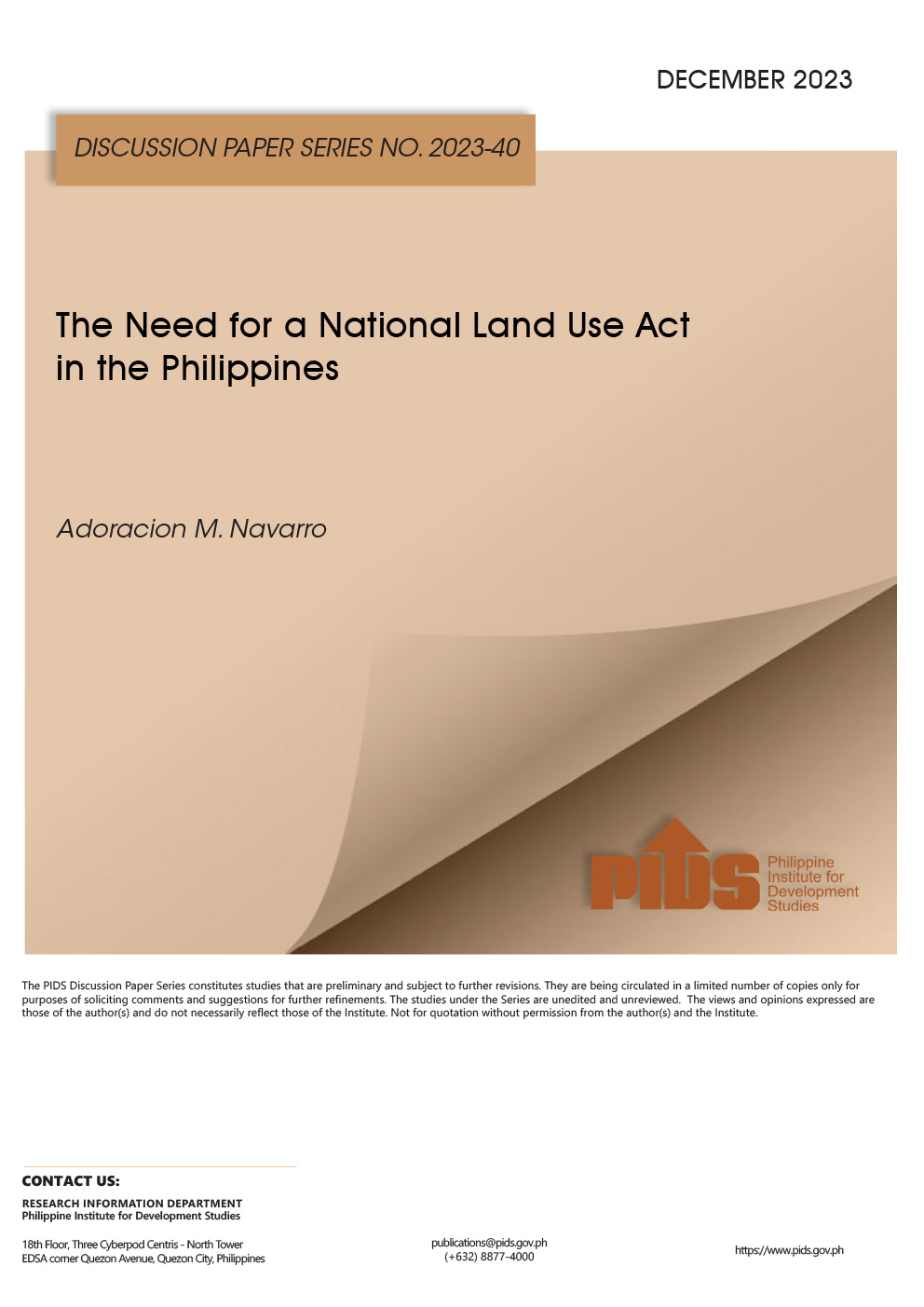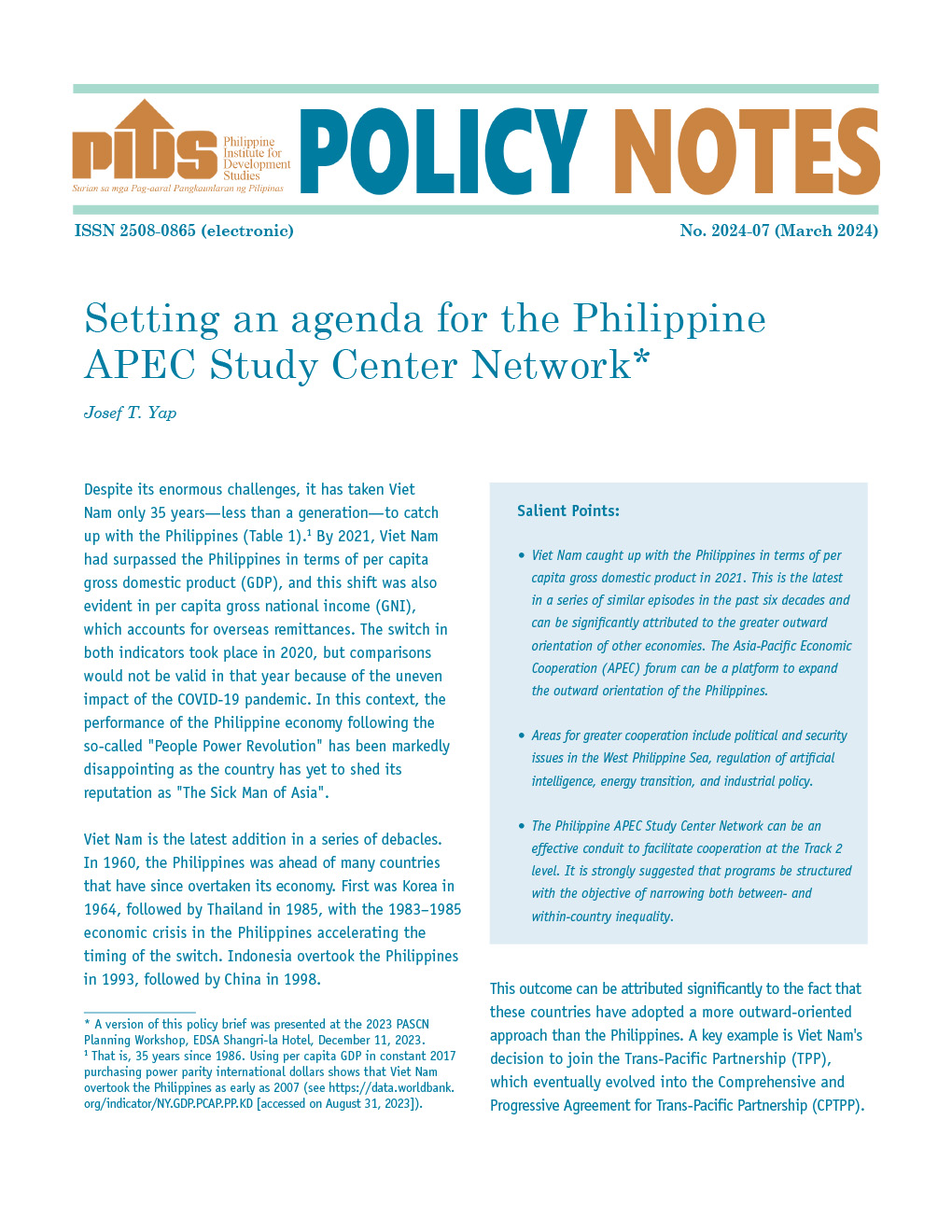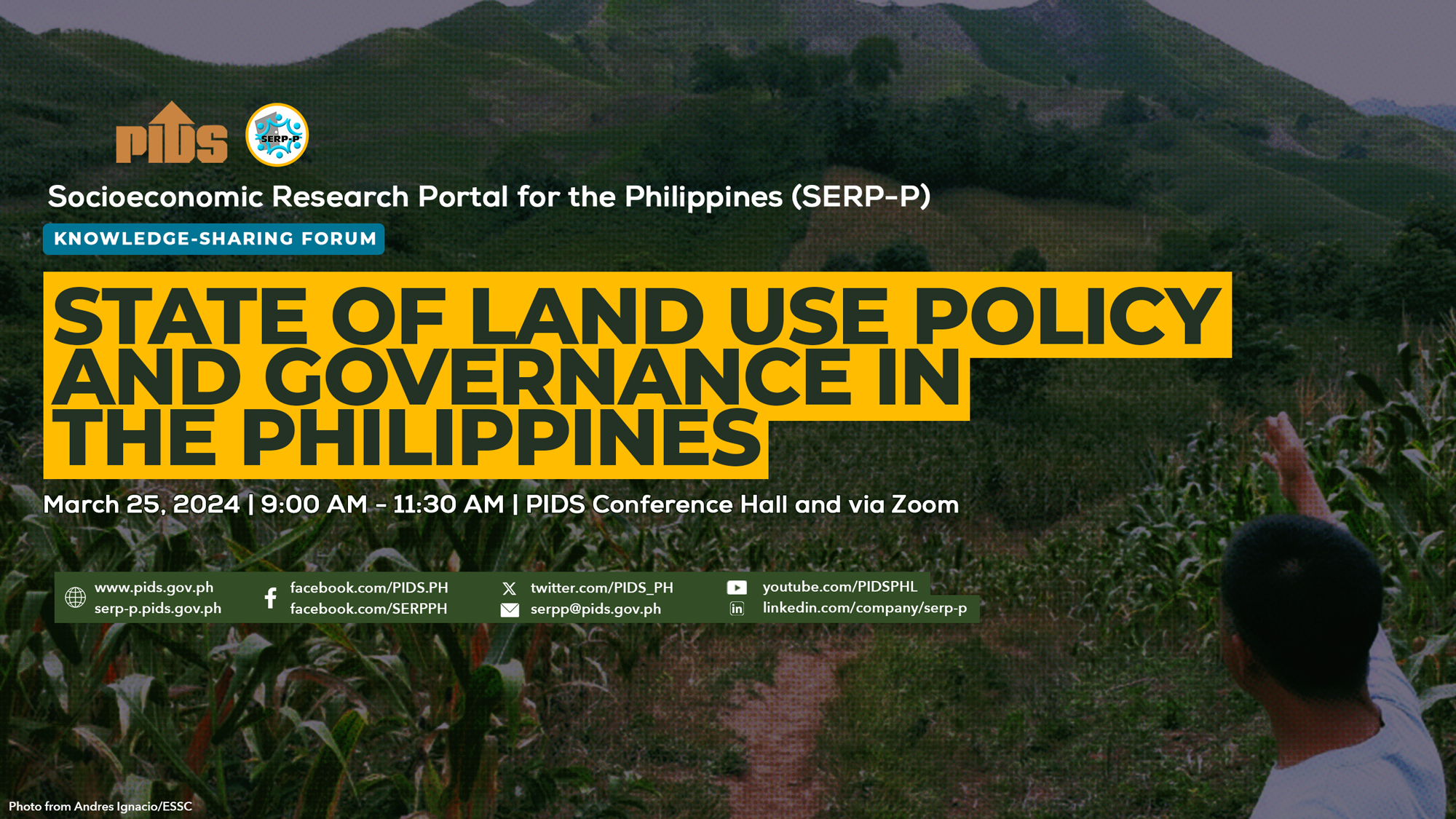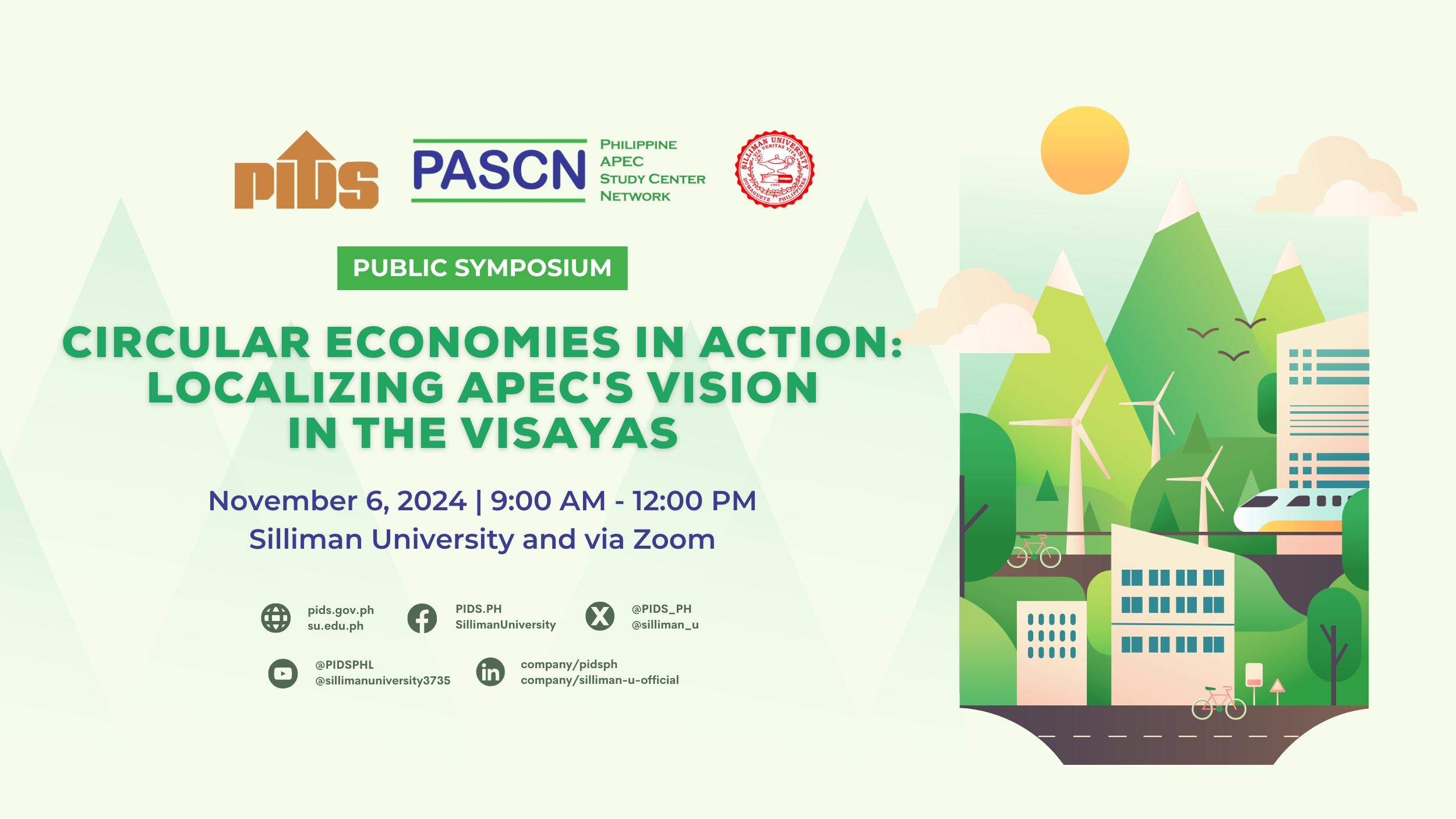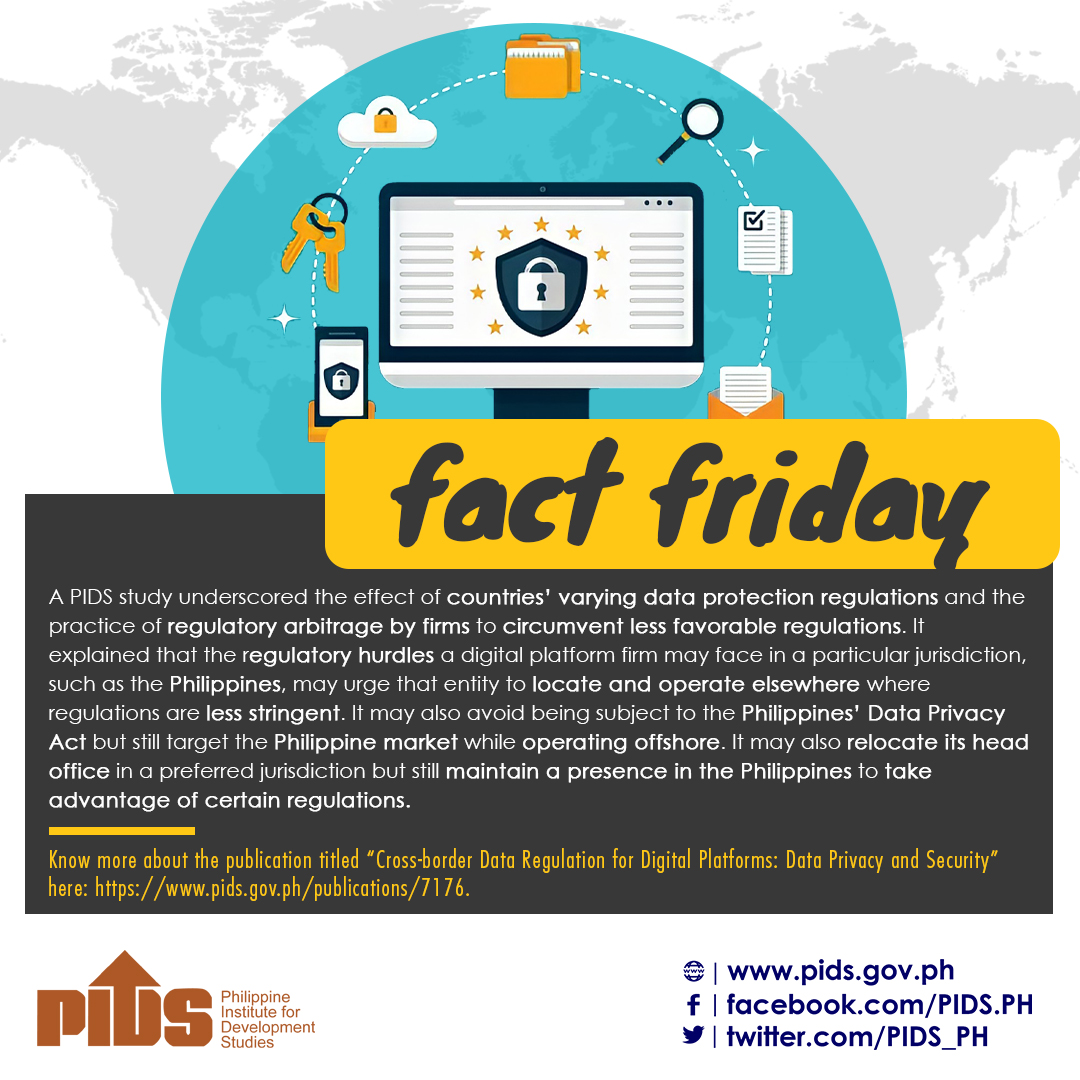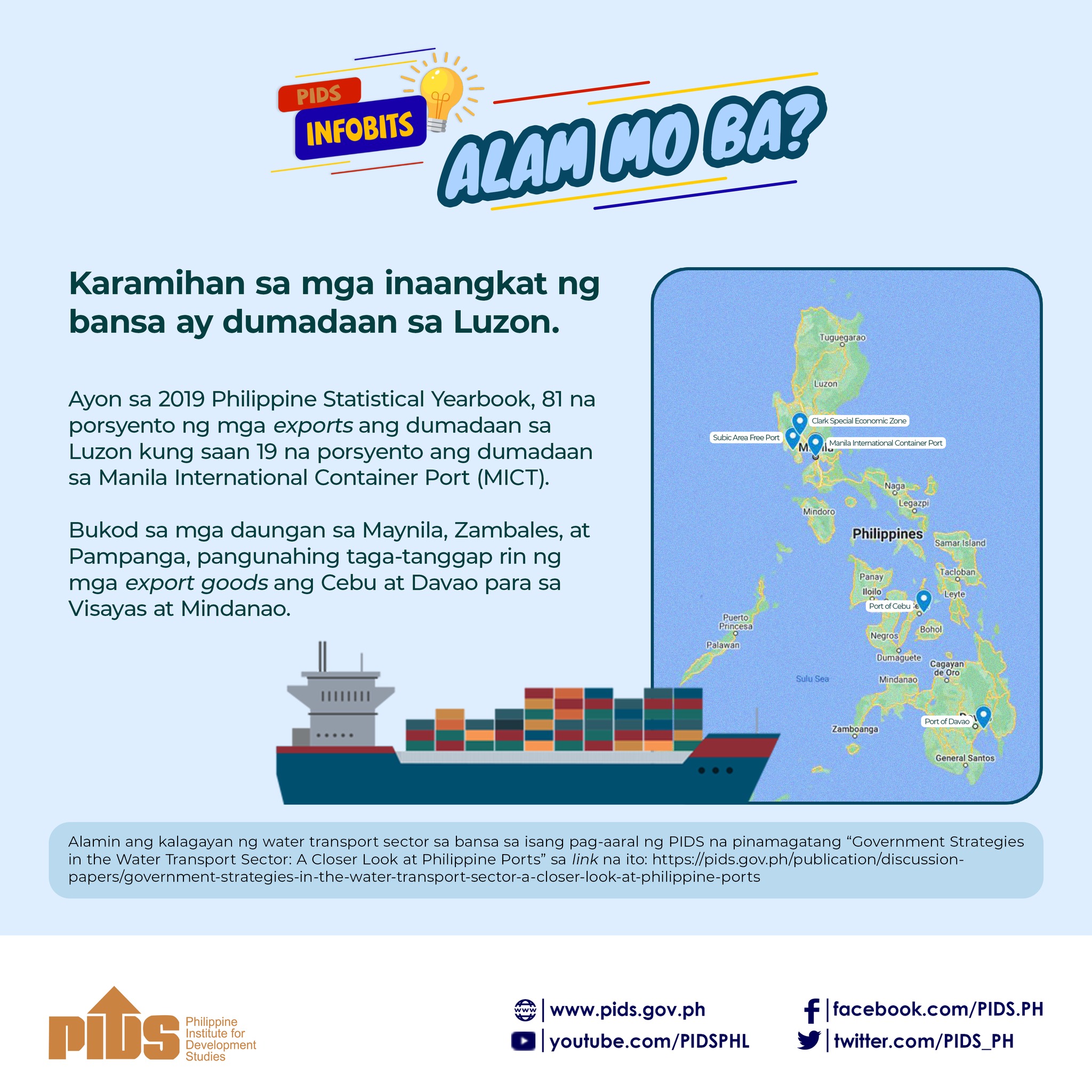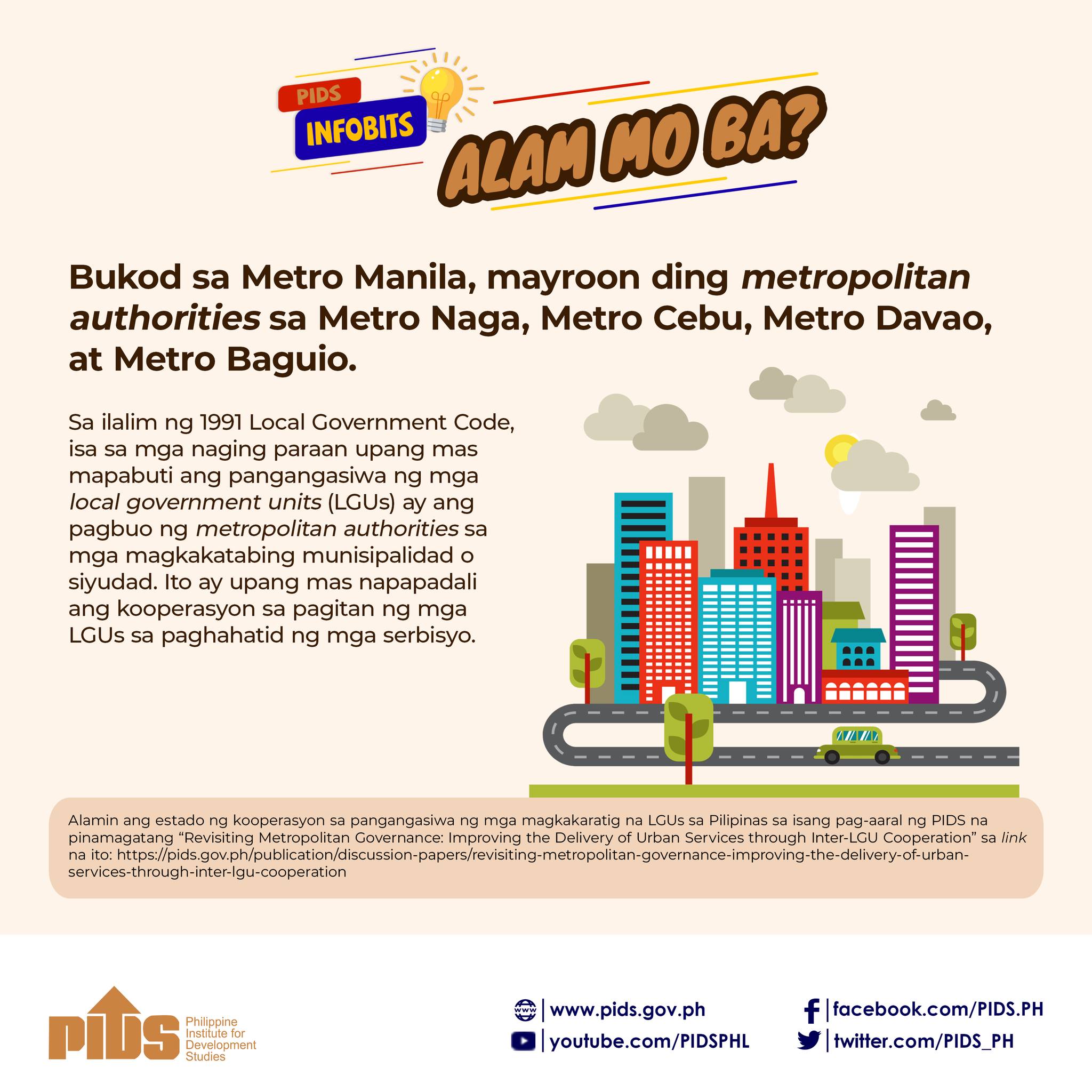The Philippines should conduct further discussions on public- private partnerships (PPPs) to address infrastructure gaps in Asia-Pacific Economic Cooperation (Apec) member-countries, according to a study released by the Philippine Institute for Development Studies (PIDS).
This was one of the key findings of the discussion paper titled "Philippine Priorities in Expanding Apec-Wide Connectivity through Infrastructure Development” authored by PIDS senior research fellow Adoracion M. Navarro.
The study stated the country can help drive the PPP discussions by focusing on the need to share knowledge and best practices, particularly on risk allocation, contract design, and management and monitoring.
"The Philippines can ask for regional cooperation on sustained, dynamic and productive capacity-building assistance for PPP units in less advanced Apec members so that they can generate a pipeline of bankable
infrastructure PPPs. Since knowledge on PPPs is not
static, capacity-building should be dynamic,” Navarro said.
The PPP route, Navarro said, will help Apec economies, including the Philippines, address financing options for infrastructure development.
Navarro said the Philippines’s public infrastructure spending only equaled 1.4 percent of local putput or the gross domestic product (GDP) in 2008 and 2.09 percent of GDP in 2012. The government intended to increase public infrastructure spending to 5 percent of GDP by 2016.
While the government’s so-called fiscal space has grown in recent years, Navarro said government revenues remain inadequate to support much-needed public spending for infrastructure. Philippine government revenue collections amounting to only P1.72 trillion or $39
billion in 2013 equaled only 14.8 percent of GDP. This was below the average revenue-to-GDP ratio of 18.6 in the Asean region.
Navarro added that other funding sources, such as Official Development Assistance (ODA), has declined in recent years.
Data from the National Economic and Development Authority (Neda) show net commitment levels declining to only $9.09 billion in 2013 from $10.58 billion in 2004.
"A decreasing trend in Philippine ODA loans for infrastructure has been observed in 2008 to 2012. This is likely related to the fact that the government’s fiscal space is improving and some of the infrastructure projects in the public investment program were restudied and became part of the PPP program,” the study stated.
"But this is a medium-term trend and it is still necessary to ensure that sources, whether domestic or external, are available to make infrastructure investments sustainable for the longer term,” it added.
The study also said that, while the creation of China’s Asian Infrastructure Investment Bank (AIIB), which has a start-up capital of $50 billion, was a welcome development, not much was known about its financing options.
Navarro said that, a year into its creation, details, such as currency risk bearing by borrowing countries, governance standards, and environmental assessments, have not been made known. In this regard, Navarro said Apec talks on infrastructure development must also push for the disclosure of these important details about the AIIB.
Apart from these, Navarro said the Philippines must also raise concerns on regional cooperation for the improvement of the transport, telecommunication and information, and energy sectors.
In terms of transportation, Apec talks must focus on maritime safety and air-transport networks. The country is one of those with a dire need to expand and improve its air-transport sector through night landing capabilities and communications, navigation and surveillance/air-
traffic management systems.
On telecommunications, the discussions must focus on improvements, such as creating broadband netwtorks, in light of the ongoing Brunei Darussalam-Indonesia-Malaysia-Philippines East Asean Growth Area submarine fiber-optic cable project.
Energy discussions, on the other hand, must focus on transforming the Apec into an energy-efficient region. These discussions must focus on energy supply and additional energy sources.

